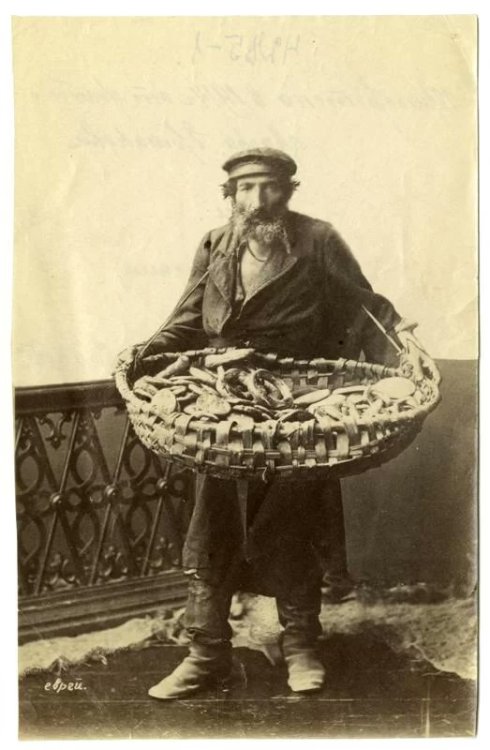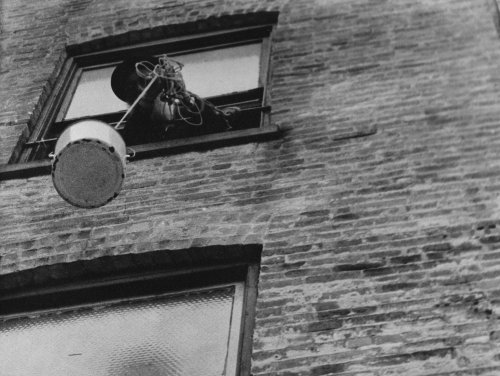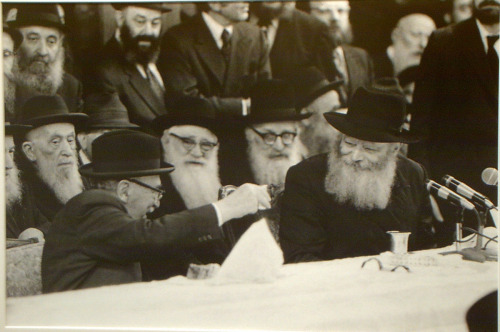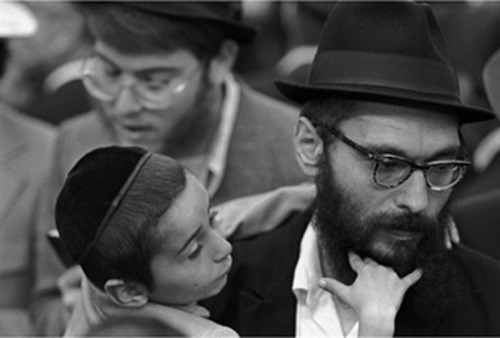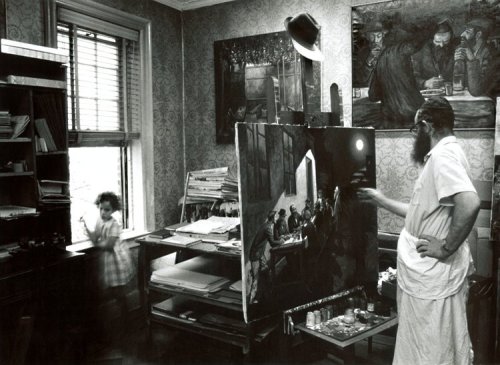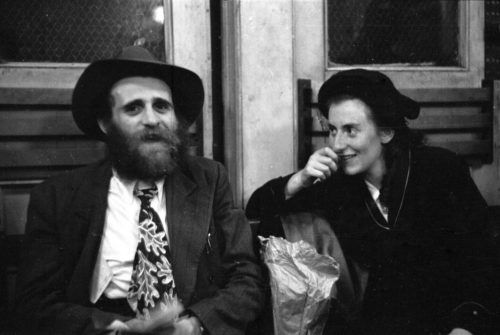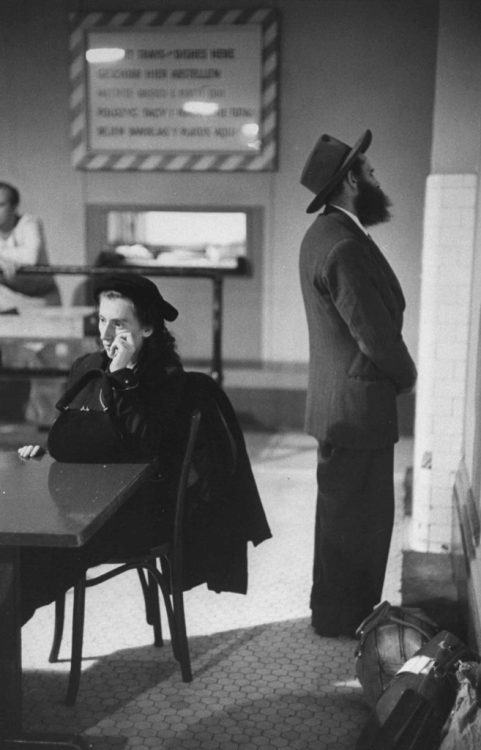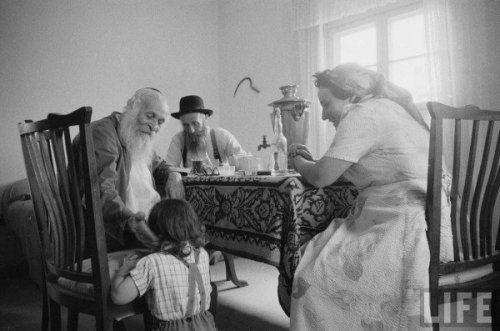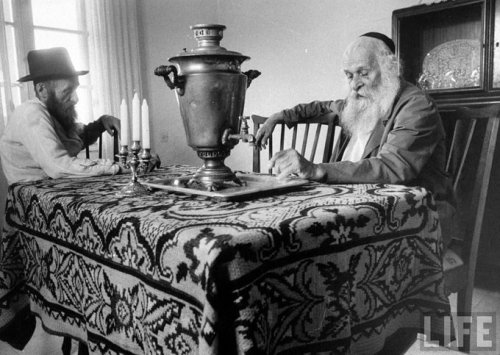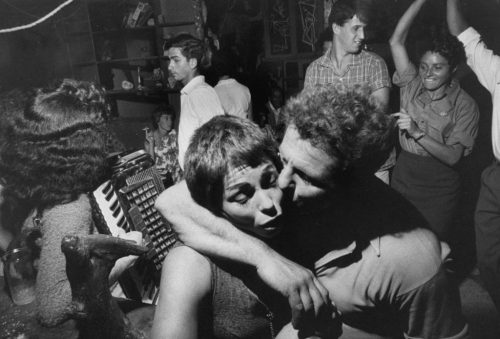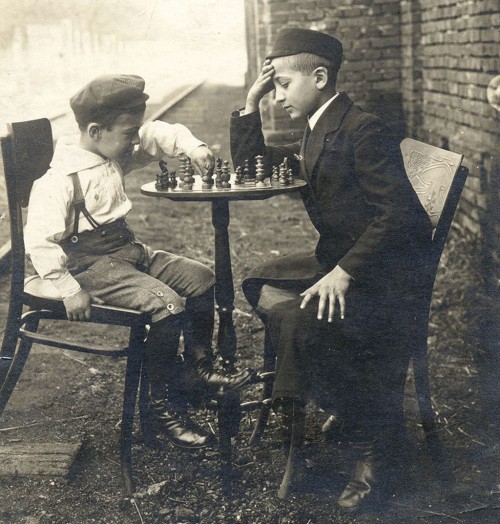#jewish photography
A Rabbi, Krasnaya Sloboda, 1978-1980, by Nodar Djindjihashvili (American, b. Russia, 1939-2002)
These photographs are only a tiny part of those we succeeded in taking during a two-year secret journey through all of Russia, in search of the vestiges of a once thriving Jewish life and culture within what is now the USSR. I planned the journey many years ago, but only in 1978 (prior to my departure from the Soviet Union) was I able to make the trip, accompanied by my friend, Albert Ben-Zion. It was the first of its kind and, I believe, the last; it was for me, the most depressing yet, in some ways, the most exciting experience of my life.
My grandfather, a distinguished scholar and rabbi, gave me much of my early education. My father a prominent attorney during the time when faith in Marxism still inspired much of the Soviet intelligentsia, believed that progress toward the new Socialist justice and decency went hand in hand with the relinquishing of one’s religious tradition. I always vacillated between these two poles, alternatively intrigued and repelled by my Jewishness. My journey was partly an attempt to resolve this conflict, as well as a search for answers to the questions that had haunted me for years.
Most important to me were the answers I found during the journey. It seems to me now that being Jewish and embracing it pushes one beyond the boundary of a nationality or a minority condition. It forces one to get deeply involved in a perpetual situation, to which there is only one answer - that is, to stay within the Jewish faith. Once this is recognized by a Jew, his or her individual situation becomes a justification for existence.
It is the life of the vast majority of Soviet Jews that I wished to preserve in my photographs. These Jews are struggling to maintain their religious and cultural heritage in the Soviet Union, despite the difficulties and the threat of extinction. I realized my mission was to record the remnants Russian Jewish culture before it vanished. The more I traveled, the more I realized that I also wanted to photograph the people who are trying to retain Jewish culture.
- Nodar Djindjihashvili
Post link
Rabbi Hendel Lieberman, a Lubavitcher hasid and friend of Schachter’s in New York, lowering a food can into a sukkah, ca. 1960. Photograph by Rabbi Zalman Schachter-Shalomi, 1924-2014.
Post link
President of Israel Zalman Shazar toasts the Lubavitcher Rebbe At 770, Crown Heights, Brooklyn, 1973. Photograph by Jerry Dantzic.
Post link
Rachel, 20, and her husband rabbinical student Schulim Pewzner, 24, from Warsaw, Poland, at Ellis Island, 1950.
Alfred Eisenstaedt/Life Pictures/Shutterstock
Post link
Miriam Stecher, a survivor of the Auschwitz concentration camp, showing her prisoner number in reaction to the news of the arrest of Adolf Eichmann, the Nazi S.S. Colonel, one of chief architects of the Holocaust, May 1960.
Paul Schutzer The LIFE Picture Collection/Shutterstock
Post link
Israelis dancing at the “Last Chance Cafe”, a night club in Beersheba, Israel, May 1960.
Paul Schutzer The LIFE Picture Collection/Shutterstock
Post link
Georgian Jew, 1870-1880s. Photographer: Yermakov D.I..
The man is wearing clothes traditional for the peoples of the Caucasus: short caftan girded with a sash, and chokha, a slim-fit cloth garment. On his head is a yarmulke (kippah). Over the kippah, the Caucasian Jews wore an astrakhan hat, i.e. a fur cap of Persian lamb skin of various shapes (they were low, tall, or conical depending on the local tradition).
Post link
Lubavitch Israeli children playing with a horse and cart at a farm in Kfar Chabad, May 1960.
Paul Schutzer The LIFE Picture Collection/Shutterstock
Post link

